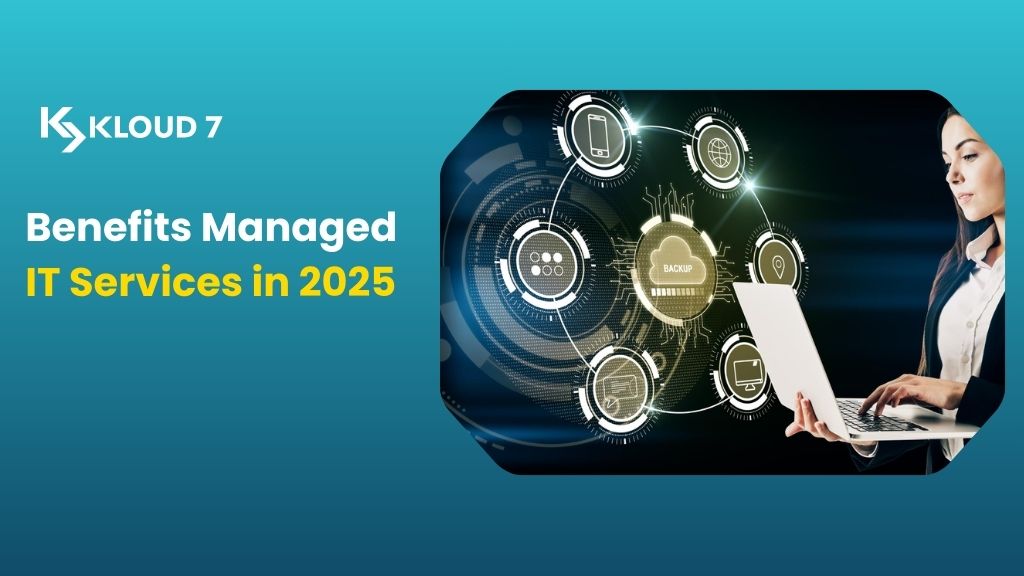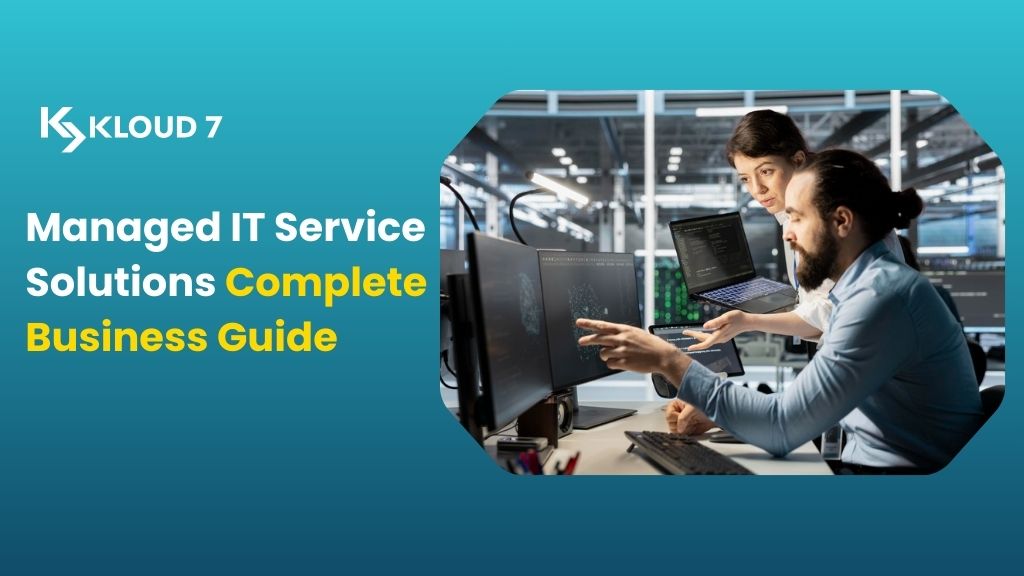Every business today runs on technology, but when your IT systems slow down, so does everything else. From lagging networks to overwhelmed servers, poor IT infrastructure management can quietly drain productivity, frustrate employees, and even lead to costly downtime. The problem often grows unnoticed until one small failure causes a big disruption.
Now imagine an environment where every system runs smoothly, data flows seamlessly, and issues are fixed before anyone even notices them. That’s the power of effective IT infrastructure management. In this guide, we’ll walk you through everything from networks and servers to service continuity and managed IT services, showing you how modern enterprises keep their technology strong, secure, and scalable.
Understanding IT Infrastructure Management
Managing IT infrastructure means taking care of all the technology pieces that keep your business running servers, networks, data centers, and cloud systems. It ensures that your tech backbone is always available, fast, and protected from failure.
When done correctly, it enhances efficiency, reduces costs, and facilitates better team collaboration.
At its core, IT infrastructure management is about balancing maintaining performance while adapting to change. As businesses grow, so does their tech stack, making it vital to track and optimize everything from hardware to software to service desks.
What It Covers
IT infrastructure spans three main areas:
- Hardware: Servers, routers, computers, and storage devices.
- Software: Operating systems, business applications, and monitoring tools.
- Networks & Cloud: Connectivity systems and virtual environments that link everything together.
Why It Matters
Without structure, technology becomes chaos. Proper management ensures systems are secure, prevents downtime, and ensures employees always have the necessary tools to work efficiently.
Common Challenges
Enterprises often struggle with outdated systems, security gaps, and a lack of standardized processes, all of which make managing IT more difficult than it needs to be.
Components of a Strong IT Infrastructure
A solid IT setup is the foundation of smooth operations. It’s more than just cables and servers, it’s the engine that powers productivity, innovation, and customer experience.
To manage IT infrastructure effectively, every part needs attention, from data storage to software updates and access management. Here’s what makes it strong.
IT Network Management
This is where all communication happens. Proper IT network management ensures that your data is transmitted securely and efficiently. Monitoring tools help detect traffic issues, prevent outages, and ensure your systems are always connected.
IT Server Management
Servers are the heart of your IT setup. With smart IT server management, you can handle backups, monitor uptime, and optimize performance. Automating server updates also prevents human error and system crashes.
IT Service Desk Manager (Concept: Service Desk)
Think of your IT service desk manager as the bridge between users and solutions, providing tech support. A well-structured service desk enhances communication, efficiently tracks issues, and ensures that no problem slips through the cracks.
Benefits of Managed IT Infrastructure Services
Outsourcing your infrastructure management to professionals can completely transform your business. With IT infrastructure managed services, companies can focus on their core goals while experts handle maintenance, monitoring, and upgrades.
This approach not only cuts costs but also ensures continuous improvement, better security, and round-the-clock support without the overhead of a large in-house team.
Quick Comparison: In-House vs. Managed IT Infrastructure
| Feature | In-House IT Management | Managed IT Infrastructure Services |
| Cost Model | High upfront hardware & labor costs | Predictable monthly subscription |
| Maintenance | Done manually by internal staff | Automated, continuous monitoring |
| Scalability | Limited by in-house resources | Easily scalable with provider support |
| Security | Depends on internal expertise | Advanced, 24/7 threat monitoring |
| Downtime Response | Reactive (fix after failure) | Proactive (prevent before it happens) |
| Focus | Time spent fixing issues | Time spent growing business |
Cost Efficiency and Predictability
With managed services, you shift from unpredictable repair costs to a stable monthly plan. This makes budgeting easier and ensures you always know where your IT spend is going.
Enhanced Security
Managed IT providers utilize advanced monitoring, patch management, and threat detection systems to safeguard your data against cyber threats.
Scalability
Your IT grows as your business grows. Managed services make it easy to scale resources — adding storage, users, or new locations without disruptions.
Building IT Service Continuity and Reliability
Imagine your systems crashing during peak business hours. Scary, right? That’s where IT service continuity management comes in. It ensures your business can keep operating even during technical failures or disasters.
Continuity management focuses on preparedness setting up recovery plans, backups, and redundant systems to keep downtime minimal.
Planning for the Unexpected
You can’t predict every failure, but you can prepare for them. Continuity planning involves identifying risks, documenting response strategies, and running regular recovery drills.
Backup and Disaster Recovery
A robust data backup system ensures you never lose critical information. Combining local and cloud backups provides a safety net that restores operations fast after any incident.
Service Desk and Communication
In times of disruption, your service desk becomes the central hub of communication. It coordinates between teams, informs users, and ensures smooth execution of recovery plans.
Future-Proofing Your IT Infrastructure
Technology evolves fast, and businesses that don’t keep up fall behind. Future-proofing your infrastructure means designing systems that can adapt to change without requiring constant rework.
By adopting cloud solutions, automating routine tasks, and integrating AI monitoring, organizations can stay agile and competitive for years to come.
Embracing Automation
Automated monitoring tools detect and fix issues instantly, saving time and preventing human error. Automation also frees your IT team to focus on strategy instead of maintenance.
Moving to the Cloud
Cloud migration gives businesses flexibility, scalability, and reduced physical maintenance costs. It also supports remote teams and global access to resources.
Regular Performance Audits
Frequent audits help identify weak spots in your network, security, or hardware before they become significant problems. Continuous improvement ensures your infrastructure stays modern and efficient.
Conclusion:
Effective IT infrastructure management isn’t just about fixing tech problems; it’s about creating a strong, reliable foundation for growth. Whether you’re running a small business or a global enterprise, managing your servers, networks, and service continuity can significantly impact how your company operates on a daily basis.
FAQs
What is IT Infrastructure Management?
IT Infrastructure Management is the process of overseeing servers, networks, hardware, software, and cloud systems to ensure smooth, secure, and efficient business operations.
Why is IT Infrastructure Management important for modern enterprises?
It prevents downtime, improves security, enhances communication, and keeps systems scalable—helping businesses run efficiently and reliably.
What are the key components of IT Infrastructure Management?
Core components include network, server, cloud, and service desk management—all working together to maintain performance and security.
What are the benefits of IT infrastructure managed services?
They reduce costs, improve security, offer 24/7 monitoring, and provide expert support—helping businesses scale without large in-house IT teams.
How does IT Service Continuity Management protect businesses?
It ensures operations continue during system failures or cyber incidents through risk planning, backups, and quick recovery strategies.




